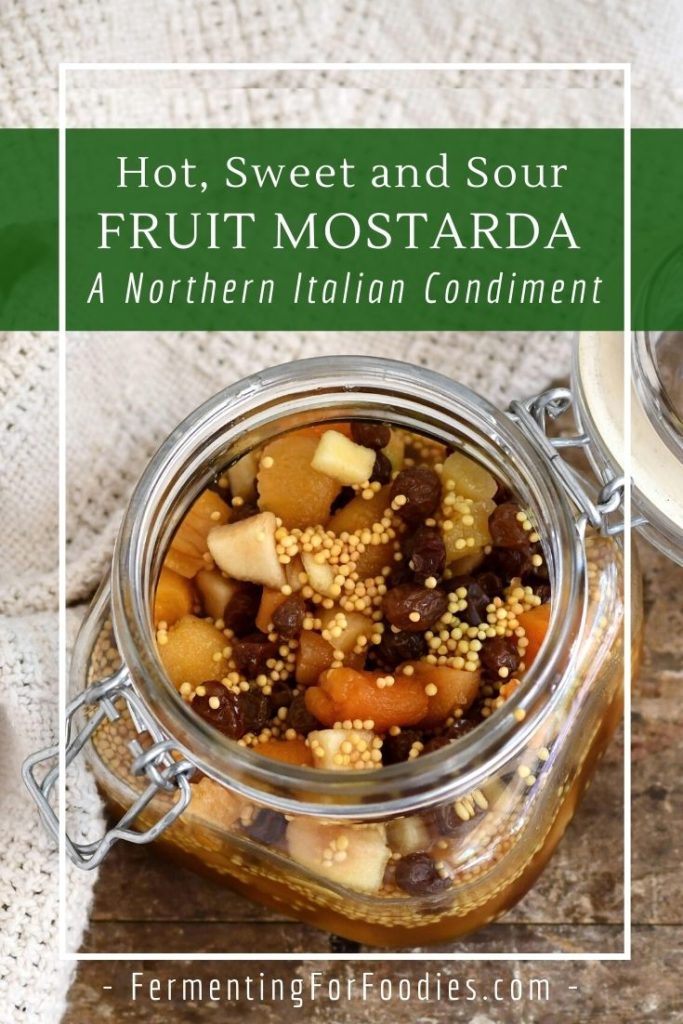
Mostarda di frutta is a Northern Italian condiment that is a mix of sweetened fruit, spiced with mustard. It is sweet, spicy, and packed with flavor.
There are a number of different types of mostarda, depending on the particular region or what fruit is in season. Often mostarda is preserved with white wine or vinegar.
In this simple, no-cook recipe, fermentation is used to both preserve the fruit and provide a slight acidity.
Raw honey contains natural yeasts and bacterial cultures, that when diluted, are perfect for fermenting sugars. It is a really easy and reliable culture for anyone new to fermenting. And in this recipe, it is perfect for providing both sweetness and culture.
The only trick is to use pure, unpasteurized honey. Regular, commercial honey won’t work.
Different Fruit Options
In this recipe, I’ve used a mix of dried fruit and hard apples. The combination provides a nice blend of flavors and texture. However, mostarda can be made from all sorts of different types of fresh or dried fruit.
Here are a few guidelines, if you want to switch up the fruit in this condiment.
- Make sure your dried fruit is sulfite-free. Otherwise, the sulfites will slow down or stop the fermentation.
- The recipe can also be made with only fresh fruit. Feel free to use apples, pears, peaches, apricots, figs, and cherries. Just avoid citrus and pineapple.
- If using 100% fresh fruit, replace both the water and the dried fruit, using 1 1/2 cups of chopped fresh fruit instead. Once the fruit is mixed with the honey it will release enough liquid to fully submerge the ferment.
How to serve mostarda
I can’t remember when I first came across mostarda, however, we love having flavorful condiments in our fridge. They are an easy way to add zest to all sorts of dishes.
This mostarda is more similar to chutney or relish than the traditional sweet and fiery fruit concoction. As a result, it is extremely versatile.
Here are a few serving suggestions:
- Mostarda is traditionally served with bollito misto (a boiled meat stew). I’ve actually never tried it, however, mostarda could be served with all sorts of meat dishes.
- We love it as part of a cheese platter. Perfect for picnics and parties.
- It makes a flavorful topping for grilled or barbecued vegetables, like eggplant and zucchini.
- Serve it with hot dogs, hamburgers or in a sandwich.
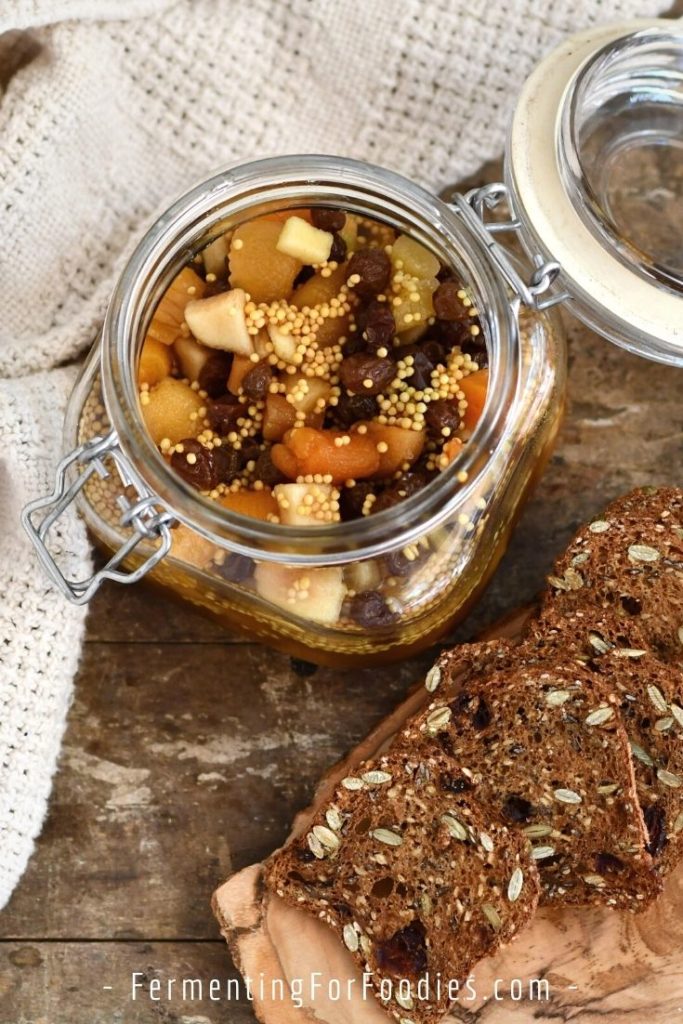
Mostarda Fermentada
Mostarda is a sweet and spicy Italian condiment. It is traditionally served with meat, but it is also delicious with cheese or in a sandwich. The fermented version is a simple, no-cook recipe!
- Prep Time: 15 minutes
- Cook Time: 15 minutes
- Total Time: 30 minutes
- Yield: 1 1/4 cup 1x
- Category: Condiment
- Method: Fermented
- Cuisine: Italian
- Diet: Gluten Free
Ingredients
- 3/4 cup mixed dried fruit (see notes)
- 1/2 cup hard green apple
- 3 Tbsp mustard seed
- 1/4 cup raw honey (see notes)
- 1/2 cup of water, to cover (chlorine-free)
Instructions
- Chop up the dried fruit and the apple. Mostarda is traditionally made from bite-sized chunks, but finely diced is also fine.
- Place the fruit in a pint-sized (2 cup) jar. Add in the mustard seeds and honey. Pour over the water. Press the fruit down in the jar. There should be enough water to cover the fruit, if not add a few more spoonfuls.
- Cap the jar with a lid that can handle the carbonation of fermentation (see notes). Place the jar in a dark location. A kitchen cupboard is perfect.
- The fruit and mustard will float, however, I’ve found a weight doesn’t help as the mustard will just escape around the sides. Instead, of using a weight, simply stir the mostarda once or twice during fermentation (after 12 or 24 hours). Let the mostarda ferment for 2 to 4 days.
- Store the mostarda in an airtight container in the fridge. It will be sparkling and sweet for the first week or so, then become more mellow and acidic over time. Enjoy within 4 to 6 weeks.
Notes
- I recommend using a mix of dried fruits: dried plums, cherries, apricots, currants and raisins are nice. The only trick is to find sulfite-free fruits, as the sulfites will prevent fermentation.
- Honey is the starter culture in this ferment. Look for honey that is labeled as unpasteurized or raw so that its natural yeasts and bacteria can ferment the fruit.
- This ferment can be capped with an untightened jar lid. This will keep out fruit flies and other bugs and is sufficient for a short ferment. If you are concerned about issues with mold and other contaminates use a fido jar or pickle pipe instead.
- Because of the health risks associated with the consumption of raw honey, this ferment is not recommended for pregnant women, children under the age of 1 year, or anyone who may be immunocompromised.
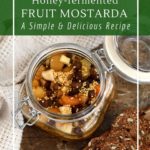
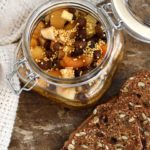
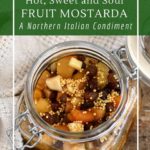
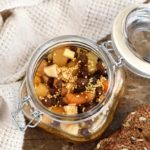
I loved this on a cheeseboard, thank you!
Great!